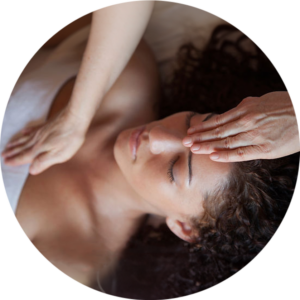Physiological Effects
Improved Blood Circulation
-
- Mechanism: Massage stimulates the flow of blood through the muscles and tissues. The pressure applied during a massage compresses and then releases blood vessels, promoting circulation.
- Benefits: Enhanced circulation delivers more oxygen and nutrients to tissues, aids in the removal of metabolic waste, and supports healing and recovery.
Lymphatic System Activation
-
-
- Mechanism: The lymphatic system helps remove toxins and waste from the body. Massage therapy encourages the movement of lymph fluid, which can become stagnant due to inactivity or illness.
- Benefits: Improved lymph flow can boost the immune system, reduce swelling, and promote detoxification.
-
Musculoskeletal Benefits
Muscle Relaxation
-
- Mechanism: Massage helps to relax tense muscles by applying pressure that stretches muscle fibers and reduces muscle tightness.
- Benefits: This can alleviate pain, improve flexibility, and enhance range of motion, making it particularly beneficial for those with muscle strains, tension, or injuries.
Reduction of Muscle Soreness
-
- Mechanism: By increasing blood flow and reducing inflammation, massage can help reduce delayed onset muscle soreness (DOMS) following intense exercise.
- Benefits: This aids in faster recovery and less discomfort after physical activities.
Neurological Effects
Pain Reduction
-
- Mechanism: Massage can reduce pain through several mechanisms, including the release of endorphins (the body’s natural painkillers) and the activation of the parasympathetic nervous system, which counteracts the stress response.
- Benefits: This makes massage an effective treatment for chronic pain conditions such as fibromyalgia, arthritis, and lower back pain.
 Stimulation of the Nervous System
Stimulation of the Nervous System
- Mechanism: The pressure and touch involved in massage stimulate nerve endings in the skin and muscles, sending signals to the brain that can influence the body’s stress response.
- Benefits: This can lead to a reduction in stress hormones like cortisol and an increase in serotonin and dopamine, which
Psychological Benefits
Stress and Anxiety Reduction
- Mechanism: The relaxing effects of massage therapy can reduce levels of cortisol, the body’s primary stress hormone.
- Benefits: Lower cortisol levels help alleviate symptoms of stress and anxiety, promoting a sense of calm and well-being.
Enhanced Mental Clarity
- Mechanism: By promoting relaxation and reducing muscle tension, massage therapy can improve mental clarity and focus.
- Benefits: This can lead to better concentration, improved sleep quality, and an overall sense of mental balance.
Hormonal and Chemical Changes
Endorphin Release
- Mechanism: Massage stimulates the release of endorphins, the body’s natural pain relievers and mood enhancers.
- Benefits: This helps to elevate mood, reduce pain, and promote a sense of well-being.
Reduction of Inflammatory Cytokines
- Mechanism: Research has shown that massage can reduce the production of cytokines, which are involved in inflammation.
- Benefits: Lower levels of inflammatory cytokines can help reduce inflammation and pain, especially in conditions like arthritis and sports injuries.
The science behind massage therapy involves a complex interplay of physiological, musculoskeletal, neurological, psychological, and chemical mechanisms. By enhancing blood circulation, relaxing muscles, reducing pain, and promoting relaxation, massage therapy offers a wide range of health benefits. Understanding these mechanisms helps explain why massage therapy is an effective treatment for many physical and psychological conditions, making it a valuable component of holistic health and wellness.
